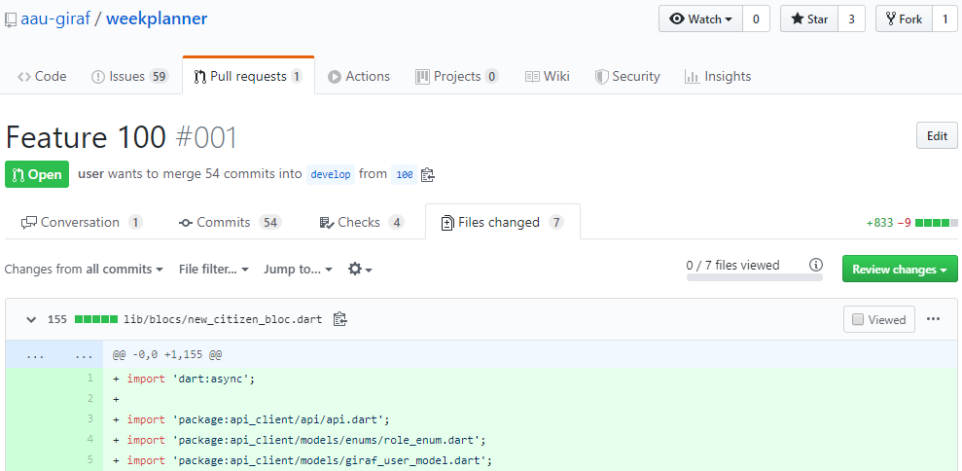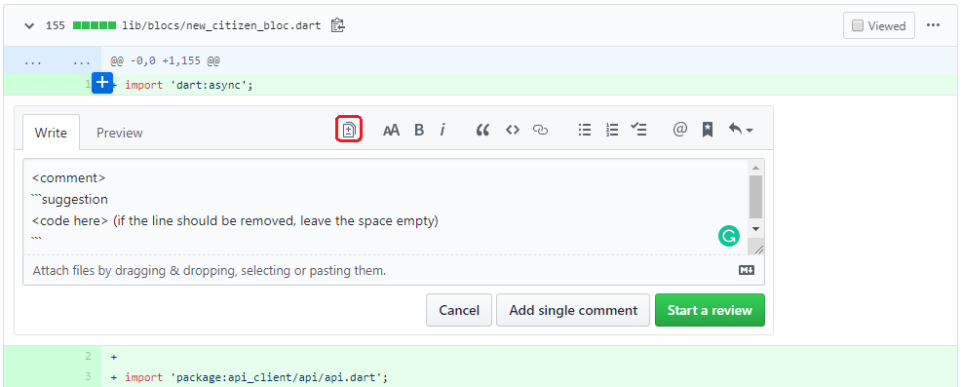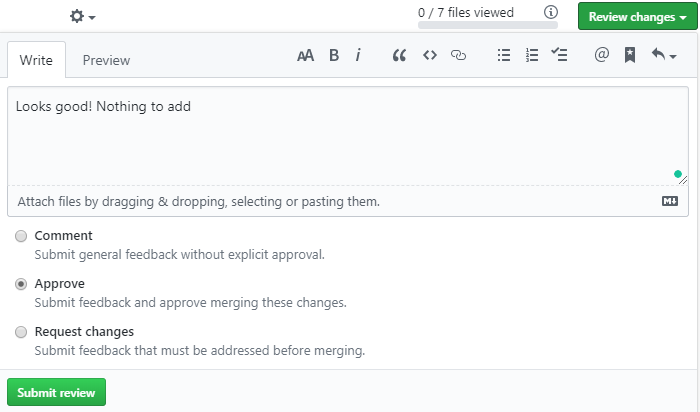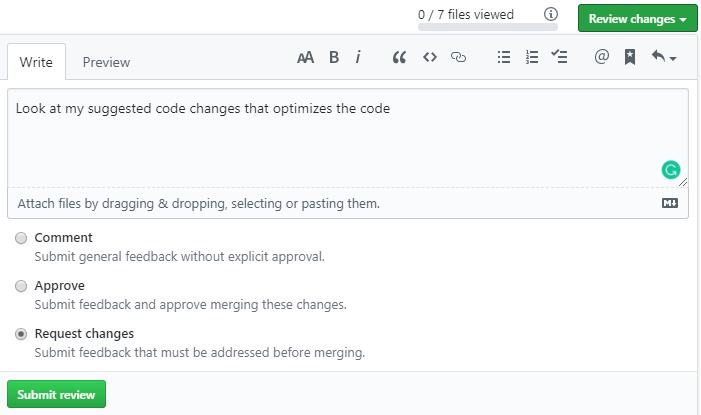Using GitHub in GIRAF¶
This section describes how to use GitHub when you a part of GIRAF.
Issues¶
Issues can be created by anyone in the GIRAF team. An issue can be a bug report or a task creation request.
The list of issues can be seen at each repository, eg. https://github.com/aau-giraf/weekplanner/issues , or a complete list for the whole organization.
Creating an Issue¶
If you find a bug, or have a task creation request you can create an issue:
- Go the the "Issues" tab of the relevant repository (E.g. https://github.com/aau-giraf/weekplanner/issues).
- Press the green "New issue" button.
- Choose whether to submit a bug report or task creation request, and press "Get started".
- Create a title and description for the issue. Please follow the template, and
do not delete the headers!
- The title for the Task Creation Request should tell what functionality you would like added using the shown form "As a developer I would like the docker config file to automatically update so that I don´t have to manually update the config file". Instead of the task being for the developer, guardian or user is also frequently used.
- Label the issue with appropriate labels.
- It can be a good idea to inform the PO group when you are done, so they can assign and refine the issue.
Branches and Pull Requests¶
In GIRAF there is used the branching strategy called GitFlow for all the repositories. A visual representation can be seen underneath.

Working on an Issue¶
When you want to work on an issue you need to create a feature branch from the
develop branch.
The naming convention for feature branches is feature/xx where xx is
replaced by an issue number.
Release Preparation¶
When a Release Preparation phase begins, a release branch is created from the
develop branch.
This branch is now used instead of develop until the release is finished.
The naming convention for release branches is release/<semester name>s<sprint no.>r<release no.>:
<semester name>is name of a semester e.g. 2020E, 2019 etc.<sprint no.>the number of the sprint where the release is created<release no.>the release number. The number starts from 1 and is reset when starting on a new sprint.
E.g. release/2020Es1r1 for semester 2020E, sprint 1, release 1.
Release fix¶
When you start working on a release fix, you create a branch from a release branch
e.g release/2020Es1r1.
The naming convention for the branch is releasefix/xx where xx is an issue number.
Creating a Branch¶
From the terminal:
1 2 | |
Or from GitHub:
-
Make sure the right parent branch is selected (e.g.
develop).
-
Input the name of the new branch (e.g.
feature/400).
-
Press "Create branch:
from ' '"
Creating a Pull Request¶
When you have finished your issue, it is time to create a pull request. A pull request is a request to merge your branch into another branch.
Before making the pull request, make sure that the code complies with the checklist for given repository (e.g. 2020E semester checklists).
From GitHub:
- Open the "Pull requests" tab in the repository (e.g. https://github.com/aau-giraf/weekplanner/pulls)
- Press "New pull request"
- Select the appropriate parent branch as base.
developin the Development Phaserelease/*in the Release Preparation
- Select your branch.
- Press "Create pull request"
- Name the pull request
Feature xxorFeature xx: A title describing changes - Write a description
- If you write
closes #xxorfixes #xx, issue xx will be linked to the PR. The linked issues will then be closed the PR is merged. (All keywords can be seen here)
- If you write
Code Review¶
You can find the pull requests you have been requested to review here.
Checklist¶
While reviewing the changes you should use the checklist for a given repository. It is usually given as a comment on the pull request as seen below.

If it is not, you can insert it yourself (e.g. 2020E semester checklists).
Remember to tag yourself with @GitHub username, so everyone can see who the checklist belongs to.
Changed Files¶
All the changes associated with a pull request can be found under the Files changed tab as shown underneath.

While reviewing the code you can make comments or suggestions for a single line or multiple lines by pressing the blue + icon (move the cursor to a line). The red square marks the selection icon which can be used to suggest code that replaces the line(s).

You can view what the author will see by clicking Preview.
Give a Review¶
When you are ready to give your review you press the Review changes button. Afterwards you are given 3 choices:
- Comment
- If you have comments or questions to the changes in the pull request you select this option. However, comments can also be made directly to a pull request without giving a review.
-
Approve
- If everything is ok, then select this option.

-
Request changes
- You select this, if you have made comments to lines in the code or if something should be made different.

When you think your review is done select Submit review.
Re-review¶
If you have given a review and the author of the pull request makes a new commit, then you have to re-review the code.